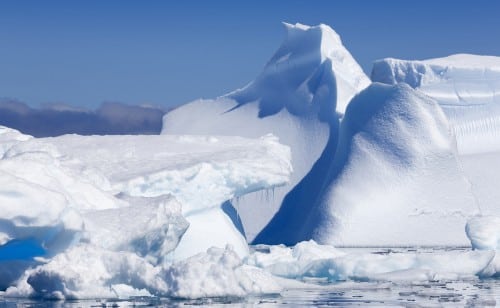A group of scientists, led by researchers from the University of Bristol in the UK, reports that a sudden increase in ice loss has been observed in an area of Antarctica that was previously considered stable. The study was published on May 21 in the journal Science. They attribute this to the effect of ocean warming and the depletion of the ozone layer

A group of scientists, led by researchers from the University of Bristol in the UK, reports that a sudden increase in ice loss has been observed in an area of Antarctica that was previously considered stable. The study was published on May 21 in the journal Science.
Through measurements of the height of the Antarctic ice shelf using satellites, the researchers discovered that the southern Antarctic Peninsula showed no signs of change until 2009. Around 2009, many glaciers began pouring ice into the ocean at an almost constant rate of 60 cubic kilometers, or about 55 trillion liters of water, every year in an area that is about 750 kilometers long.
This makes the region the second largest contributor in Antarctica to sea level rise. They also add that the ice loss shows no signs of abating.
Dr. Brett Waters, Marie Curie Fellow at the University of Bristol, who led the study, said: "As of today, the glaciers have added about 300 cubic kilometers of water to the sea - equivalent to the volume of almost 350,000 Empire State Buildings combined.
The changes were observed using the European Space Agency's CryoSat-2 satellite which focuses on remote sensing of ice. From an altitude of about 700 km, the satellite sends a radar pulse to the earth which hits the ice layer and is returned to the satellite. Measuring the time it takes for the beat to return makes it possible to determine with great precision the height of the ice surface. By analyzing data spread over about five years, the researchers found that the ice surface of some glaciers is now falling by about 4 meters each year. The loss of ice in the area is so great that it causes small changes in the Earth's gravitational field, which can be measured by another satellite - Grace.
"The fact that so many glaciers in such a large area suddenly started losing ice came as a surprise to us," says Dr. Waters. "This shows a rapid response of the ice surface to change, which changed completely within a few years."
An analysis of the Antarctic climate model showing that the sudden change cannot be explained by changes in snow or air temperature. Instead, the researchers attribute the rapid ice loss to warming oceans.
Many of the glaciers in the area are fed by ice shelves floating on the surface of the water. They act as a support for the ice resting on the bedrock, due to the slowing of the flow of glaciers into the ocean, the westerly winds surrounding Antarctica have become stronger in recent decades, in response to climate warming and the depletion of the ozone layer. The strong winds push the water into the Southern Ocean and they flood the sea glaciers and the ice shelves sink.
Ice shelves in the region have lost almost a fifth of their thickness in the last twenty years, thus reducing the resistance of the glaciers. The main concern is that much of the ice in the southern Antarctic Peninsula is anchored in bedrock below sea level, meaning that even if the glaciers retreat, the warm water will chase them inland and melt them further.
According to Dr. Waters: "It seems that sometime around 2009, the depletion of the ice shelf and the melting of the underground glaciers passed a critical threshold that caused the sudden loss of ice. However, compared to other regions of Antarctica, the southern peninsula is ironically understudied because it has shown no change in the past.
"To locate the cause of the changes, we are required to collect more data and to know in greater detail the geometry of the local ice shelves, the topography of the ocean floor, and the thickness of the ice sheet and glacier flow. These data are important to know how long the depletion will continue."
to the notice of the researchers
More of the topic in Hayadan:

6 תגובות
The impurity can be easily reversed by releasing sulfur into the atmosphere
Walking Death
It's amazing how the opposite of "understanding" becomes "doubt"... don't say "I don't understand", say "I doubt".
skeptical
Please, you are welcome to invest all your financial capital in buying real estate in Miami Beach. After you do that, we'll start discussing what will happen.
In conclusion, it is, then, the warming of the oceans.
The questions I ask are:
A]. Is the warming of the oceans indeed a definite finding that emerges from the direct measurements?
B]. If the answer to A] here is positive, then what are the possible explanations for the phenomenon?
Is there a connection to the warming of the atmosphere and the increase in the concentration of CO2 in the atmosphere or
Are other explanations also possible?
For example, increased volcanic activity in the depths of the sea.
Will any of the geophysicist surfers be able to enlighten us?
Thanks.
Oh my, what will happen?
I suppose that if there is a place at the poles, where there is an increase of the ice surface,
It will not be known to the public, because it does not fit the "warming" concept...
What is special about this study is that it refers to an area that has not been looked at at all before. They thought that nothing changes there. The melting in this area is in addition to the melting in other areas that are constantly being studied.